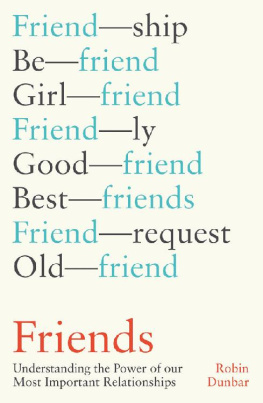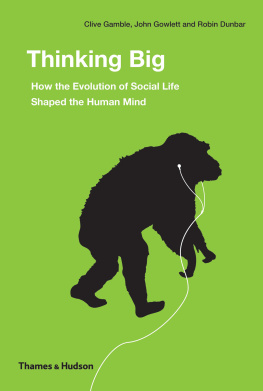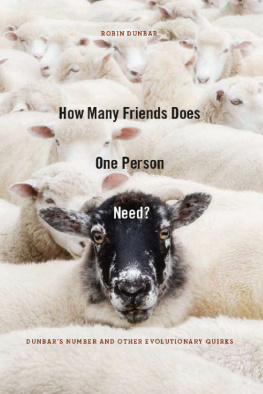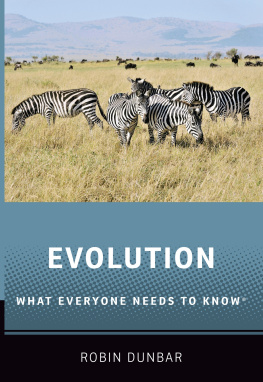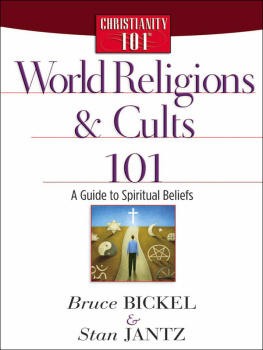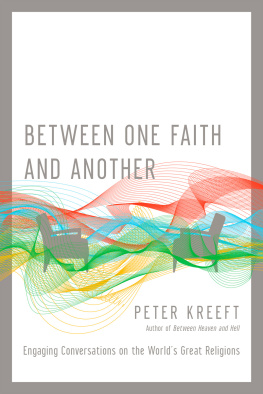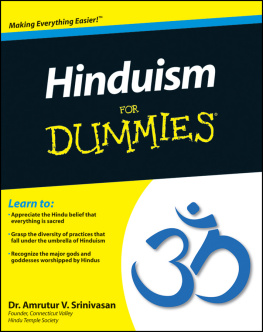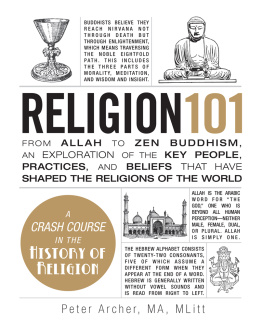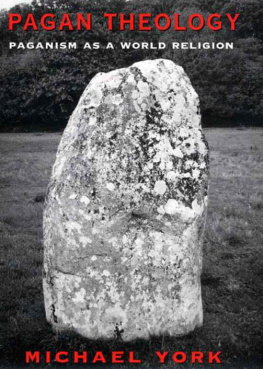
ROBIN DUNBAR
How Religion Evolved
And Why it Endures

PENGUIN BOOKS
UK | USA | Canada | Ireland | Australia
New Zealand | India | South Africa
Penguin Books is part of the Penguin Random House group of companies whose addresses can be found at global.penguinrandomhouse.com.
First published by Pelican Books in 2022
Text copyright Robin Dunbar, 2022
The moral right of the author has been asserted
Cover by Coralie Bickford-Smith
Book design by Matthew Young
ISBN: 978-0-241-43180-1
This ebook is copyright material and must not be copied, reproduced, transferred, distributed, leased, licensed or publicly performed or used in any way except as specifically permitted in writing by the publishers, as allowed under the terms and conditions under which it was purchased or as strictly permitted by applicable copyright law. Any unauthorized distribution or use of this text may be a direct infringement of the authors and publishers rights and those responsible may be liable in law accordingly.
Contents
List of Figures
Shamanic activity in hunter-gatherer societies
Causes of religion
Personal social networks
Sizes of hunter-gatherer groups
Traits leading to friendship
Sense of bonding after religious service
Prehistoric cave art from Europe
San cave art
Evolution of mentalizing
Violence in hunter-gatherer societies
Geographical origins of main religions
Correlations between religions, disease, growing season and languages
Latitude and length of growing season/disease load
Acknowledgements
This book is the result of a longstanding interest in the origins and evolution of religion and its role in community bonding. The opportunity to explore this topic in any detail, however, did not arise until 2015 when funding was obtained from the Templeton Religion Trust for a three-year research project (Religion and the Social Brain). The studies carried out under the auspices of this grant were largely intended to test specific hypotheses about the nature and evolution of religion, and they form the basis of this book. However, the book also builds on nearly two decades of research by my research group on the nature of sociality and the mechanisms of community bonding in primates and humans. Many of the ideas that underpin this story were developed in earlier projects funded by the British Academy (the Lucy to Language project) and the European Research Council (the RELNET project) that also involved a large number of collaborators, postdocs and graduate students, to all of whom I am grateful.
The Templeton project was a collaboration between researchers at the Universities of Oxford, Cambridge, Coventry and Lincoln, and the International Society for Science and Religion. In addition to myself, the members of the project were: Roger Bretherton, Sarah Charles, Miguel Farias, Alastair Lockhart, Valerie van Mulukom, Ellie Pearce, Michael Reiss, Leon Turner, Beth Warman, Fraser Watts and Joseph Watts. Elise Hammerslag and Cassie Sprules were the project research assistants. Our external collaborators included Simon Dien (University College London) and Rich Sosis (University of Connecticut), and we greatly benefited from the wisdom of Armin Geertz (University of arhus), Jim Jones (Rutgers University) and Emma Cohen (University of Oxford) as members of the projects Advisory Board. None of them bear any responsibility for the views in this book, of course, but their individual and collective contributions proved invaluable to the development of the ideas that make up its central story.
Fraser Watts, Leon Turner and Rich Sosis kindly read the entire draft of the book, and I am grateful for their comments. Roger Bretherton read are by Arran Dunbar.
Introduction
For as long as history has been with us, religion has been a feature of human life. There is no known culture for which we have an ethnographic or an archaeological record that does not have some form of religion. Even in the secular societies that have become more common in the past few centuries, there are people who consider themselves religious and aspire to practise the rituals of their religion. These religions vary in form, style and size from small cults numbering a few hundred people centred around a charismatic leader to worldwide organizations numbering tens, or even hundreds, of millions of adherents with representations in every country. Some, like Buddhism, take an individualistic stance (your salvation is entirely in your own hands), some like the older Abrahamic religions
While many believe in living a moral life fully engaged with fellow citizens, others believe that salvation can only be achieved by abandoning even the trappings of everyday life, including the wearing of clothes as is the case with some Hindu and Jain ascetics. In the Christian tradition, the Adamite sect in late Roman Egypt insisted on complete nakedness during their services. took matters even further, advocating breast and genital mutilation in women and the removal of both penis and testes in men (all performed with red-hot irons) so as to restore their bodies to the original pre-Fall condition of Adam and Eve in the Garden of Eden. The variety is bewildering and seemingly incoherent, limited only by the inventiveness of the human imagination. To the outside observer, there seem to be few unifying themes.
Religion is not, of course, a modern phenomenon. Deeper into the past, there are clear hints that our ancestors believed in some form of afterlife. Burials accompanied by grave goods clearly intended for use after death become increasingly common from around 40,000 years ago. By far the most spectacular of these are at Sunghir on the upper reaches of the River Volga, just east of Moscow. They date to around 34,000 years ago. A handful of graves lie clustered together near a small hill fort on the riverbank. Two of these were children aged about ten and twelve, buried head to head in a double grave. As with many burials from this period in both Europe and Africa, the burials are extraordinarily rich and elaborate in a way that only makes sense if those who buried them believed that they would continue to live in another world.
Like many burials of the time, the childrens bones are heavily stained by red ochre which had been poured over their bodies. The ochre had been laboriously ground from haematite-bearing rocks a task so arduous that no one would bother unless they thought it might play a seminal role in what happens to the body after death. In addition, they were each covered in around 5,000 pierced mammoth ivory beads, which would have required many thousands of hours of skilled work to shape and bore, never mind stitch on to the clothing in which the children had been buried. Each of the children had a circlet of about forty Arctic fox teeth around their foreheads that may have been part of a headband, as well as ivory arm bands, and a bone pin at the throat where it probably secured a cloak. The older one (thought to be male) has 250 pierced fox teeth forming a belt around his waist. Lying beside them are sixteen carved ivory spears varying in length from eighteen inches to eight foot, a human thigh bone whose shaft had been filled with ochre, several deer antlers whose ends had holes drilled through them, several carved ivory discs, a carved pendant of an animal and a carving of a mammoth. In short, it seems that the children had been so deeply mourned that they were buried in sumptuous clothing accompanied by a rich array of grave goods that had taken thousands of hours to manufacture. It was a level of generosity that seems absurd for a people with few possessions unless they believed that these things would be used by the children in their afterlife.
Next page

